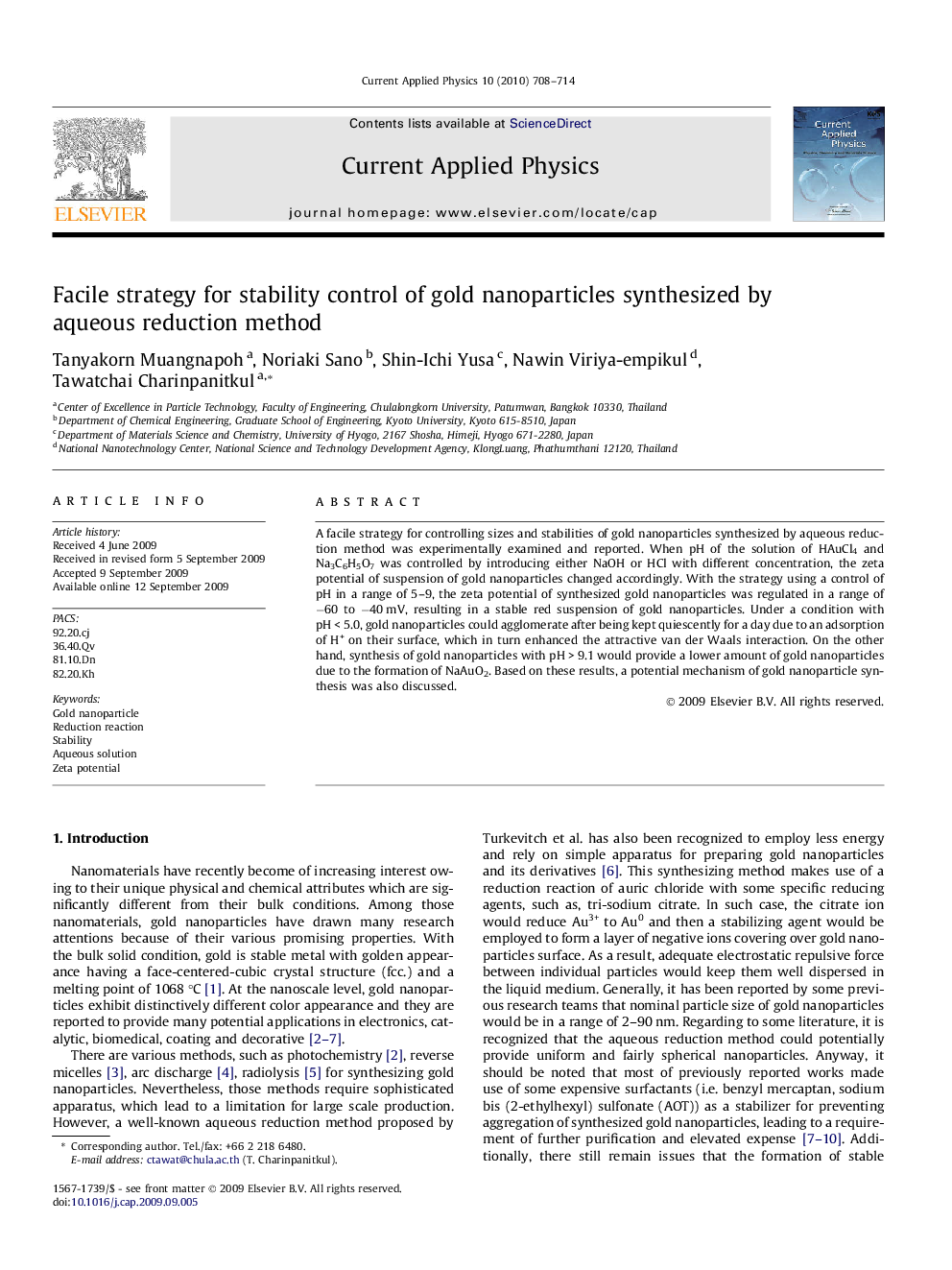| Article ID | Journal | Published Year | Pages | File Type |
|---|---|---|---|---|
| 1788708 | Current Applied Physics | 2010 | 7 Pages |
A facile strategy for controlling sizes and stabilities of gold nanoparticles synthesized by aqueous reduction method was experimentally examined and reported. When pH of the solution of HAuCl4 and Na3C6H5O7 was controlled by introducing either NaOH or HCl with different concentration, the zeta potential of suspension of gold nanoparticles changed accordingly. With the strategy using a control of pH in a range of 5–9, the zeta potential of synthesized gold nanoparticles was regulated in a range of −60 to −40 mV, resulting in a stable red suspension of gold nanoparticles. Under a condition with pH < 5.0, gold nanoparticles could agglomerate after being kept quiescently for a day due to an adsorption of H+ on their surface, which in turn enhanced the attractive van der Waals interaction. On the other hand, synthesis of gold nanoparticles with pH > 9.1 would provide a lower amount of gold nanoparticles due to the formation of NaAuO2. Based on these results, a potential mechanism of gold nanoparticle synthesis was also discussed.
